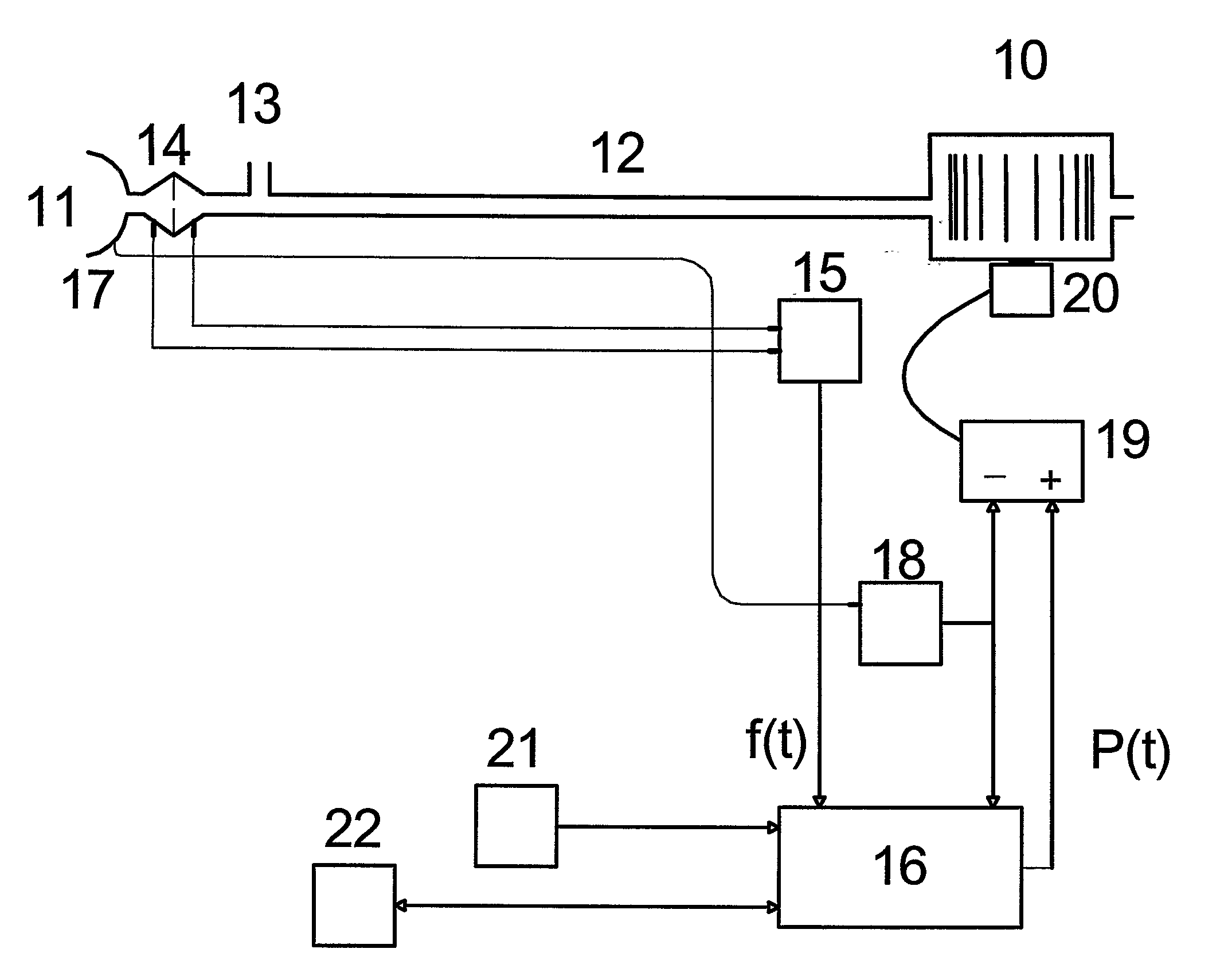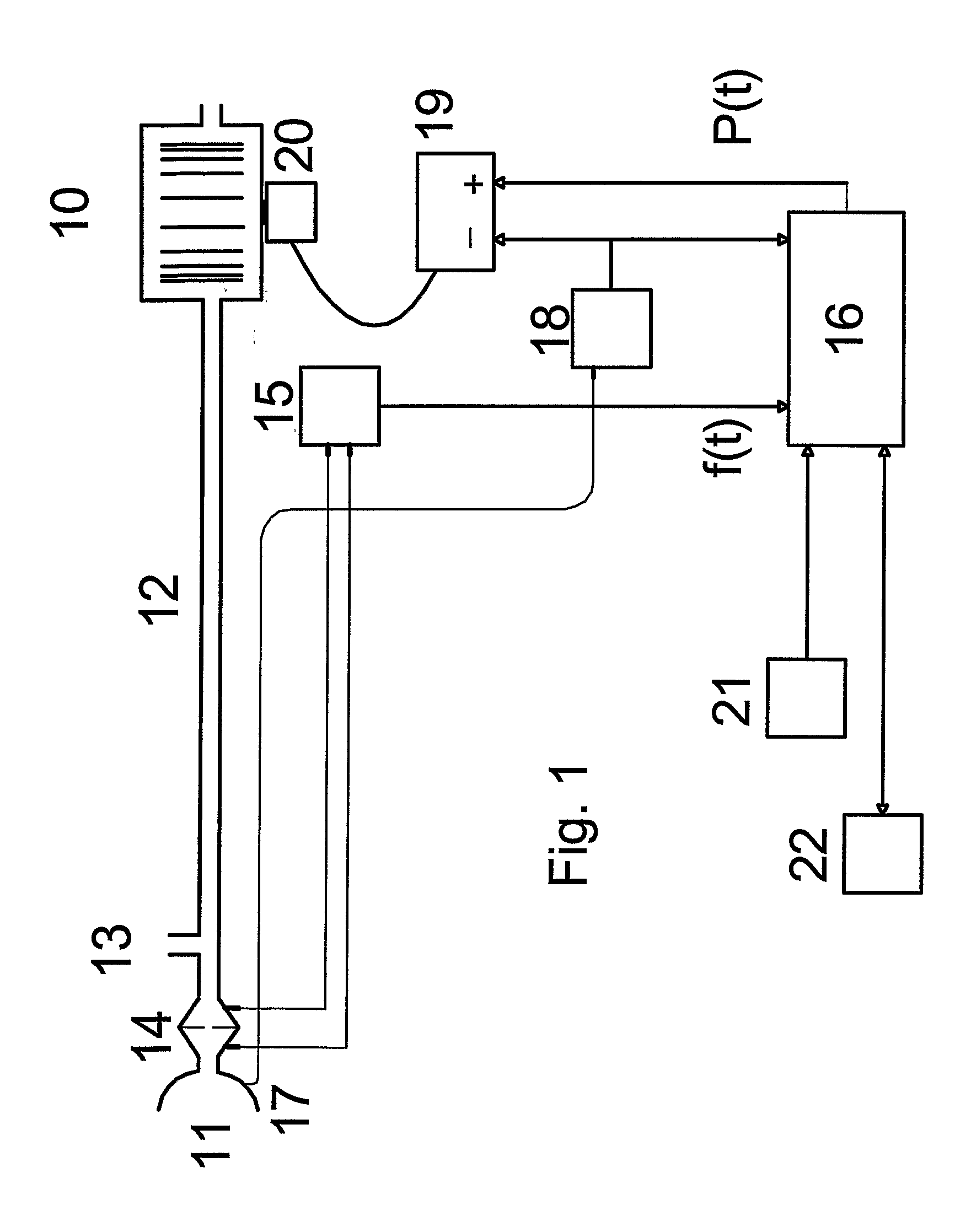Pressure support ventilation of patients
a technology for ventilators and patients, applied in the direction of valve operating means/release devices, catheters, diagnostic recording/measuring, etc., can solve the problems of loss of ventilatory support, loss of supplemental oxygen, loss of end expiratory splinting pressure, etc., and achieve only very partially effective control of mouth leakag
- Summary
- Abstract
- Description
- Claims
- Application Information
AI Technical Summary
Benefits of technology
Problems solved by technology
Method used
Image
Examples
Embodiment Construction
[0070]A servo-controlled ventilator useful for accomplishing the invention is shown in FIG. 1. A blower 10 supplies air under pressure via delivery tube 12 to a mask 11 or via another such device for providing flow to a patient's respiratory system. Exhaust gas is vented via exhaust 13. Mask flow is preferably measured using pneumotachograph 14 and differential pressure transducer 15 to derive flow signal f(t). Mask pressure is measured at pressure tap 17 using pressure transducer 18. Flow and pressure signals are sent to a controller or microprocessor 16 including a memory which implements the processing described herein to derive a pressure request signal P(t). Programmed instructions accessible to the microprocessor are coded on integrated chips in the memory of the device or may be loaded as software and stored by some other data storage medium of conventional design (not shown). The actual measured pressure and pressure request signal P(t) are fed to motor servo 19 which contro...
PUM
 Login to View More
Login to View More Abstract
Description
Claims
Application Information
 Login to View More
Login to View More - R&D
- Intellectual Property
- Life Sciences
- Materials
- Tech Scout
- Unparalleled Data Quality
- Higher Quality Content
- 60% Fewer Hallucinations
Browse by: Latest US Patents, China's latest patents, Technical Efficacy Thesaurus, Application Domain, Technology Topic, Popular Technical Reports.
© 2025 PatSnap. All rights reserved.Legal|Privacy policy|Modern Slavery Act Transparency Statement|Sitemap|About US| Contact US: help@patsnap.com



